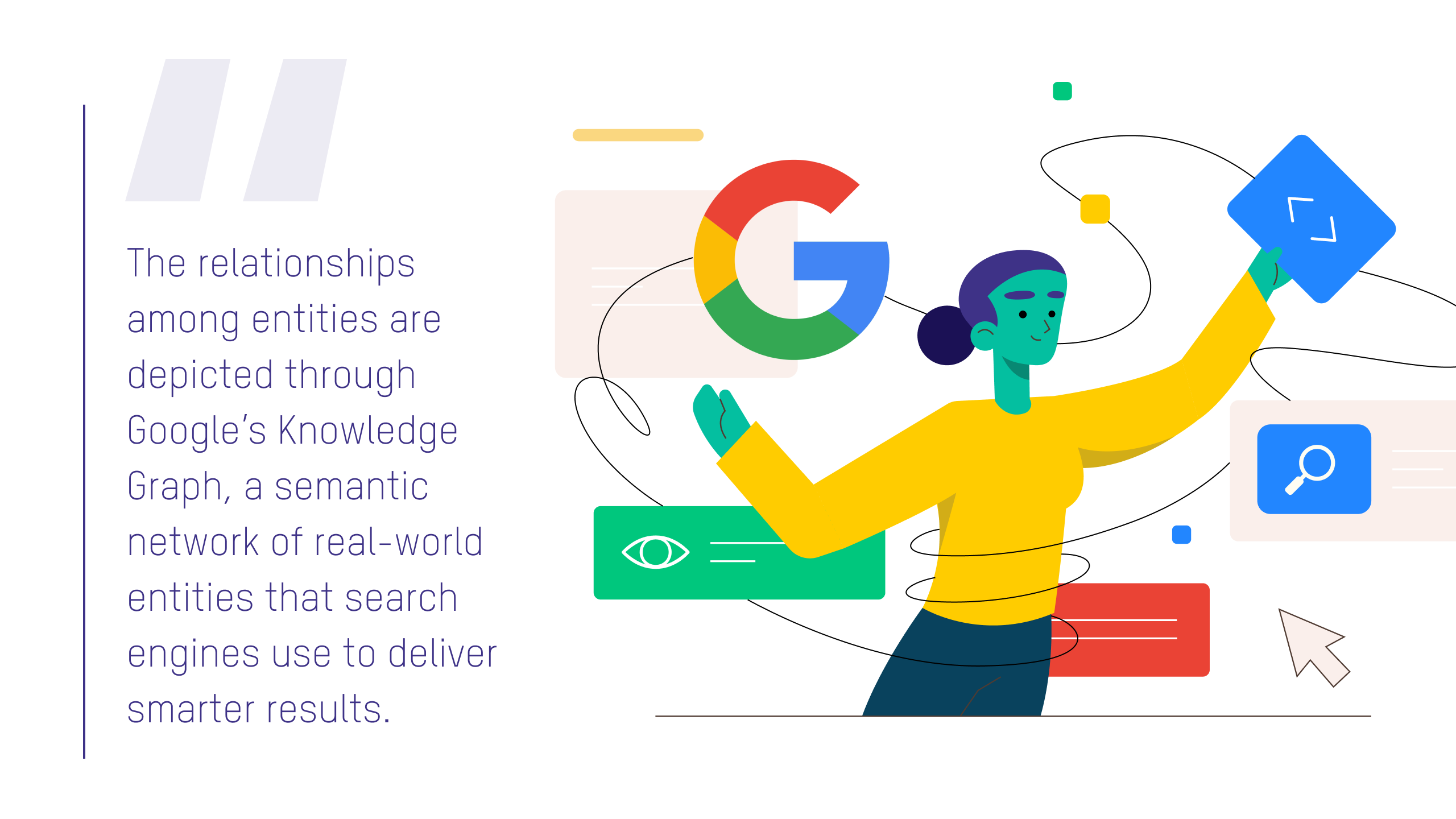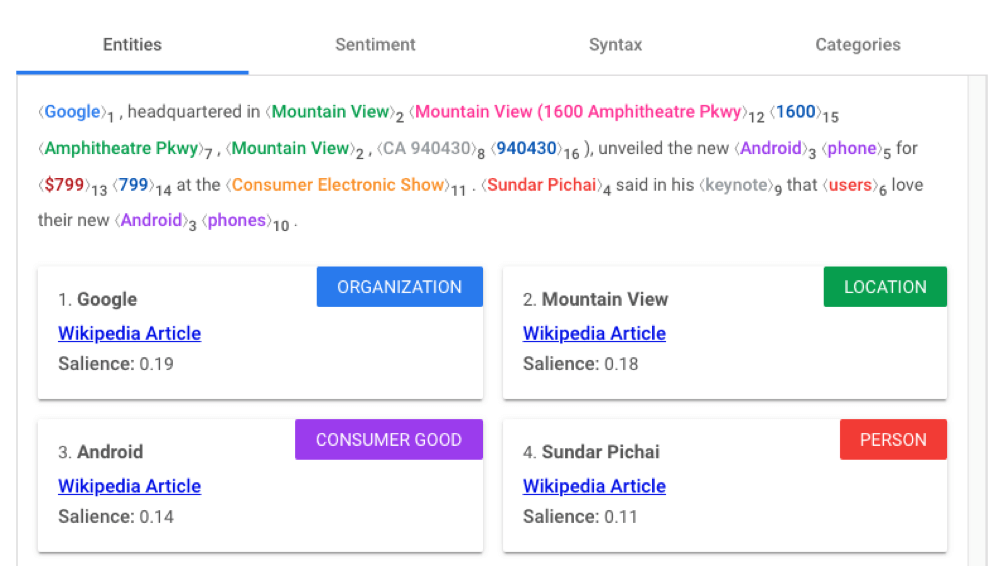When it comes to SEO, keywords are still key. But don’t overlook entities!
What are Entities?
Much like keywords, entities relate to the content on webpages but in a much broader sense. Google defines entities as unique, definable, and distinguishable concepts—tangible or intangible. They can pertain to a person, place, object, event, or idea. But compared to keywords, entities are less ambiguous. Their meanings and associations aren’t restricted to a specific language. Search engines can understand them regardless of how they’re written.

Furthermore, entities have distinct attributes that make them independent from other entities but connected to them based on common attributes. The relationships among entities are depicted through Google’s Knowledge Graph, a semantic network of real-world entities that search engines use to deliver smarter results. It depicts the structure of connections between and among entities, along with their corresponding descriptions and attributes.

Source: Ahrefs
How are Entities Created?
Google builds its database of entities through two methods—obtaining them from knowledge-based systems (like Wikipedia) and getting them from unstructured data on the internet. The search engine then stores them in its database, classifying them based on its entity ID, class, attribute, relationship, and relevance. Currently, Google’s database consists of 5 million entities and 500 entity properties.
How Do Search Engines Use Entities?
Search engines use entities—and their relationships with keywords (and other entities)—to better determine search intent and deliver the most relevant results to searchers.
First, search engines can better recognize search intent with the use of entities. For example, when a user types in the word “apple,” Google can identify whether the user is looking for the brand or the fruit. The use of entities allows search engines to better determine contextual information and reduces the ambiguity that comes from using just keywords when locating for answers.
Second, entities help search algorithms determine connections between or among keywords. In the past, search engines couldn’t recognize variations of keywords across web pages, which prevented them from identifying whether keywords were related or not. But with the introduction of entities, search engines get to understand variations and establish their connections across domains—and even across languages—which help improve the overall search experience.
How to Use Entities to Optimize Content?
Focusing on keywords may not be enough to get your content discovered. So entities are your golden ticket to better search engine results page (SERP) standings.
When writing about a topic, research about entities associated with it. You can glean ideas from Google’s Knowledge Graph, which offers insights into entities and their relationships with each other. Google Images and People Also Ask tab can also be used to look for related entities or relevant topics that you can use.

Source: Smart Insights
There is also the Natural Language API, which helps rate and analyze entities based on their salience, syntax, sentiment, and categories. This machine learning tool informs you which entities to integrate into your content to boost your chances of being discovered on SERPs. But your content must be continuously updated when new related entities arrive. For instance, when a new product launches and becomes an entity, it’s a good idea to integrate it into the content.
Indeed, with the emergence of entities comes the rise of a more semantic-based search experience—and we’re all for it. So if you want to get ahead of the game, then it’s time to put entities front and center.



